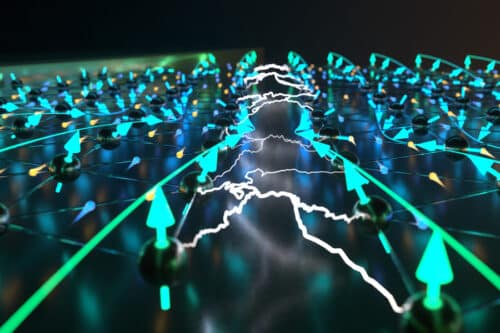The magnetic state offers a new way to make spintronic memory devices that work faster and use less energy than electronic ones.

MIT physicists have discovered a new type of magnetism called p-wave magnetism in nickel iodide, a two-dimensional crystal created in the lab. This magnetic state combines features of ferromagnetism, where electrons prefer a certain spin direction, and antiferromagnetism, where equal opposite spins cancel out overall. What makes p-wave magnetism unique is that the spins on nickel atoms form spiral patterns that are mirror images of each other, like left and right hands.
Because of this spiral spin pattern, the researchers can switch the direction of electron spins by applying a small electric field aligned with the spiral. This “spin switching” flips the spiral from left-handed to right-handed and vice versa. This ability is crucial for spintronics, an alternative to traditional electronics that stores data using electron spins instead of electric charge. Spintronics can potentially pack much more data onto devices and use far less power to write and read information.
The discovery builds on earlier research that revealed the spiral spin pattern in nickel iodide’s atomic lattice but did not connect it to controllable spin switching. Theorists had proposed that such a spiral pattern could realize p-wave magnetism, where electrons traveling in opposite directions have opposite spins, and that switching the spiral’s handedness would switch electron spins as well. The new experiments confirmed this by synthesizing thin flakes of nickel iodide, shining circularly polarized light on them, and observing that electron spins matched the light’s handedness—a clear sign of p-wave magnetism.
Further tests showed that applying a small electric field along the spiral’s direction switches electron spins and creates a current of electrons with aligned spins. This spin current can flip magnetic domains in devices, enabling efficient magnetic bit control. Spin-based electronics generate less heat and lose less energy because they move spins instead of electric charges. The small electric field needed for switching also suggests significant energy savings.
However, p-wave magnetism was observed only at very low temperatures near 60 kelvins, limiting immediate practical use. The next step is to find materials that exhibit this magnetism at room temperature, paving the way for real-world spintronic devices that could transform data storage and electronics.








